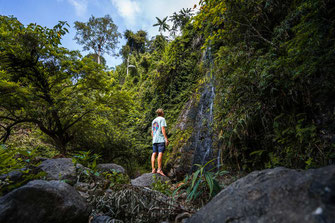🌐 »

The south of Laos - for many travelers this part of the country is still a black spot on the map. Too few sights, too uninteresting and a too arduous journey let many prefer to flee to the neighboring countries. But completely wrong, because in addition to the impressive nature, Vat Phou, one of the two UNESCO World Heritage Sites of the country, is also worth a visit.
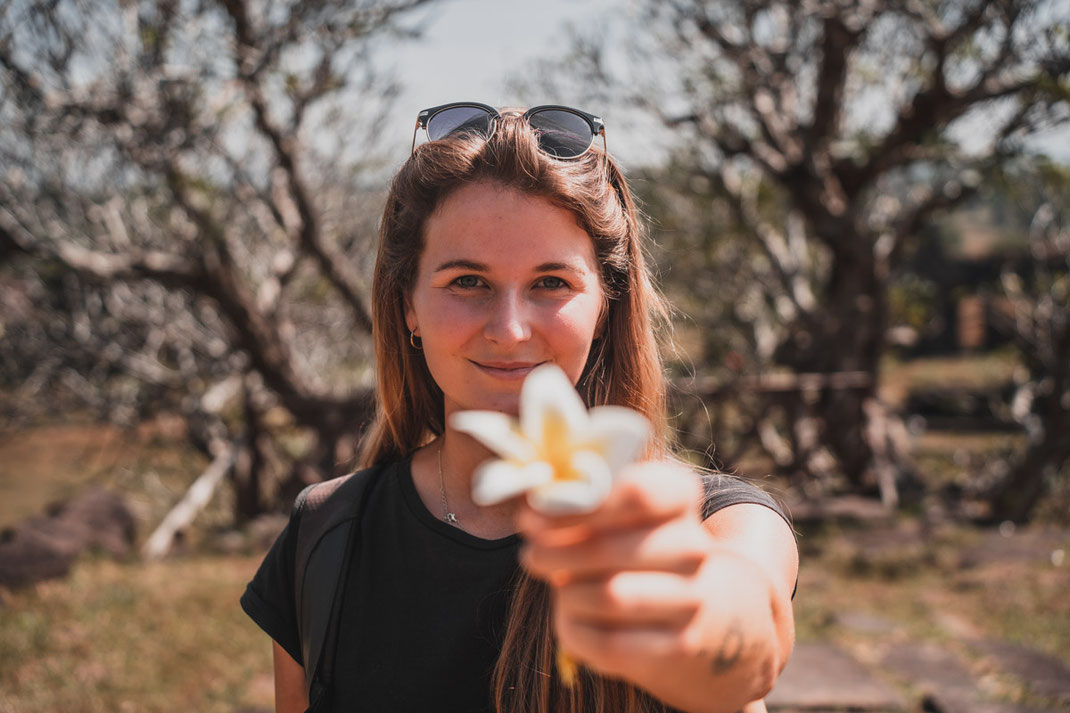


Starting point for your trip to the south is the capital of Laos, Vientiane. This is not particularly worth seeing and is used by many only as a hub for their journey. To get to Pakse, the third largest city in the country, you have two options. Either you choose a night bus, which brings you within 12 hours to your destination or, and for this variant we have decided, you use quite comfortably the airplane. In about 1.5 hours you will have covered the distance of 700 kilometers and can walk fresh out of the small airport of the city.

We ourselves stayed a little outside of Pakse, more precisely in Champasak. Here we can warmly recommend the Nakorn River View Hotel. The accommodation is located directly on the Mekong River and the sunrise is breathtaking! The owners fulfill your every wish and the food is just bombastic. From there it is also not far to Vat Phou. Only 10 kilometers and a dusty road separate us and our uncomfortable mountain bikes from the temple complex. We start cycling, the sun burns down mercilessly on us once again and only the wind provides some cooling. Waving children and their euphoric greetings in English conjure a smile on our lips. And we ask ourselves once again why we didn't just rent a scooter. But a rolling stone gathers no moss!
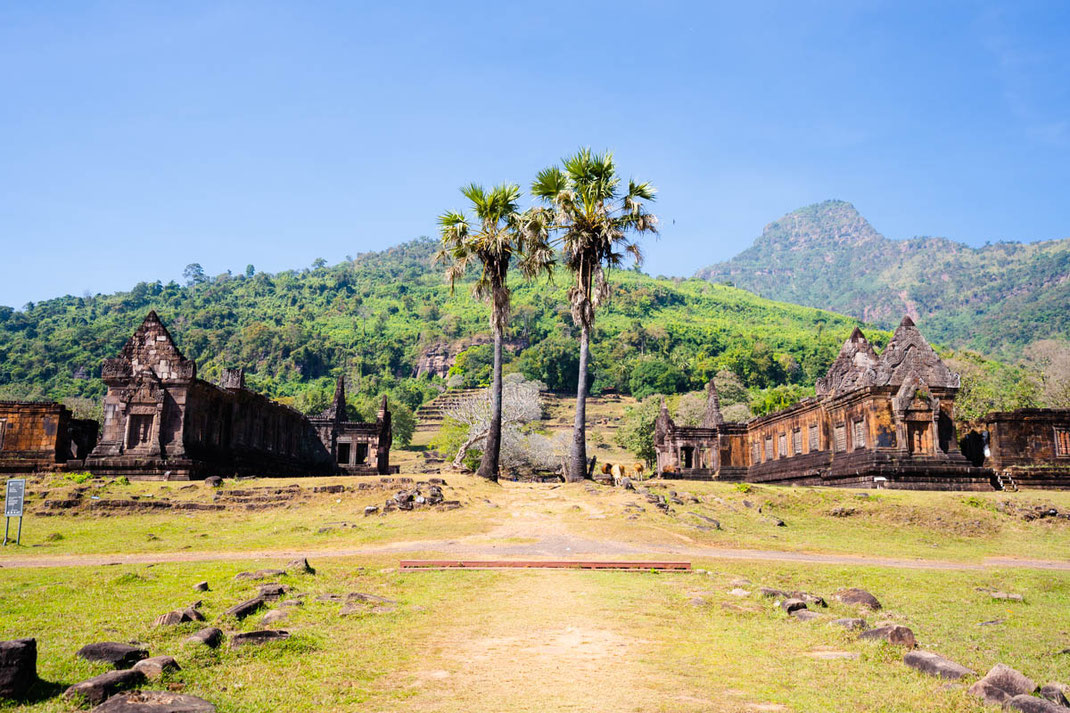
However you get to the temple, pay attention to the opening hours from 6 am - 6 pm. Of course, an entrance ticket is also necessary, which costs 50,000 kip (≈ 2.50 €) per person. From the entrance, nothing of the temple complex is really visible yet. Free e-shuttle buses take us to the actual entrance. Passing huge water basins and the first columns, we finally reach the lowest level. Two symmetrically constructed buildings face each other, their exact use is still unclear. Only a few visitors are loitering here, we rest in the shade of the ruins and with closer inspection one notices more and more details on the buildings.
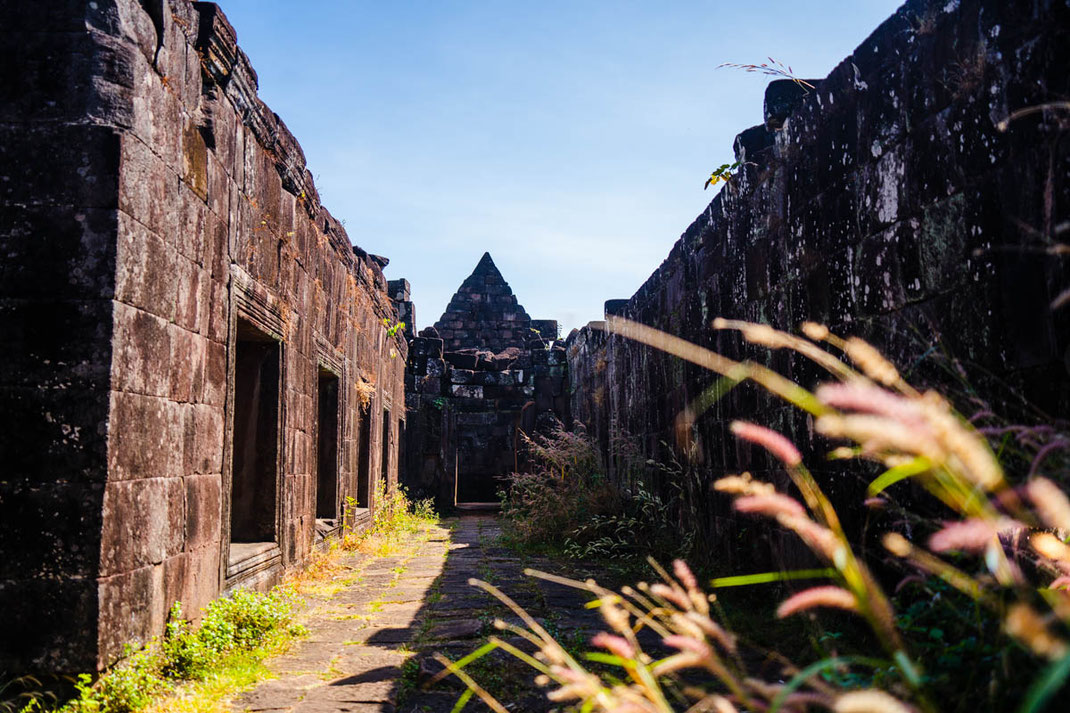





A narrow stone staircase leads further up under the flowering temple trees to the next levels. At the top is the centerpiece of the complex, a small temple with snake heads. But also a water source, various animals carved into the stone and the view over the complex is absolutely worth seeing. Parts of it have been dated to the 6th century, which even precedes the famous Angkor Wat in Cambodia. People also like to make a comparison between the two temples here, because the typical Khmer construction method is also clearly recognizable here. In size and fame Vat Phou can not compete, but still the complex has its own charm. Incidentally, this fell into oblivion and was rediscovered only in 1866. Also interesting is that Vat Phou was originally a Hindu temple dedicated to the deity Shiva. However, the buildings were supplemented with many elements of Buddhism, which gives a unique mix.
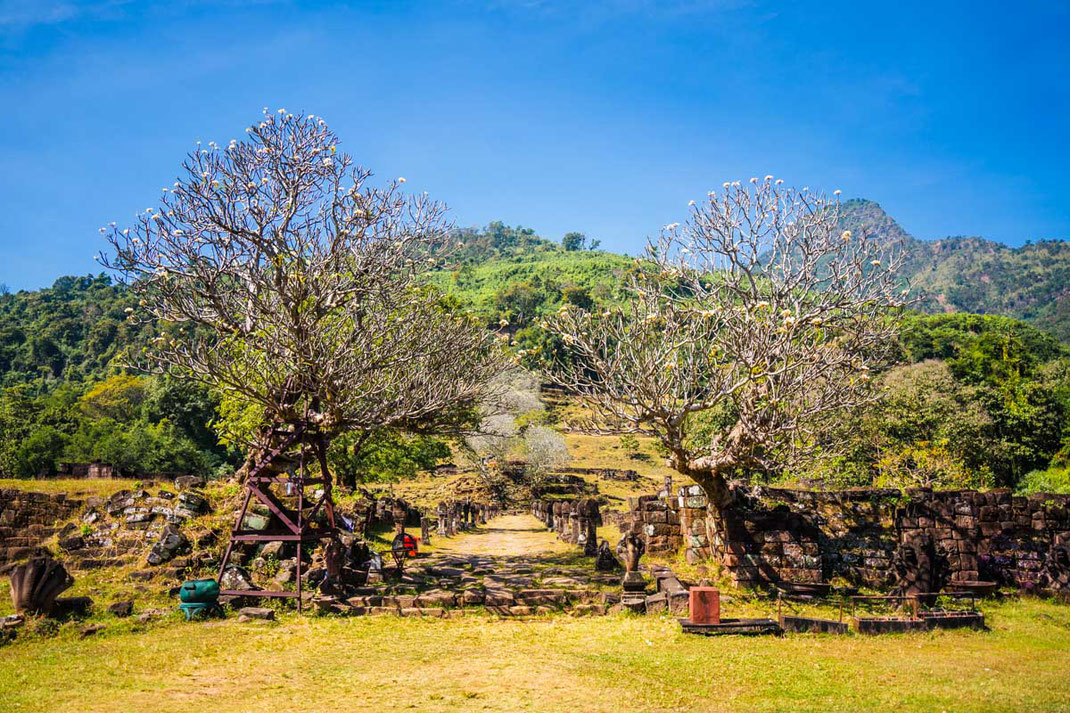
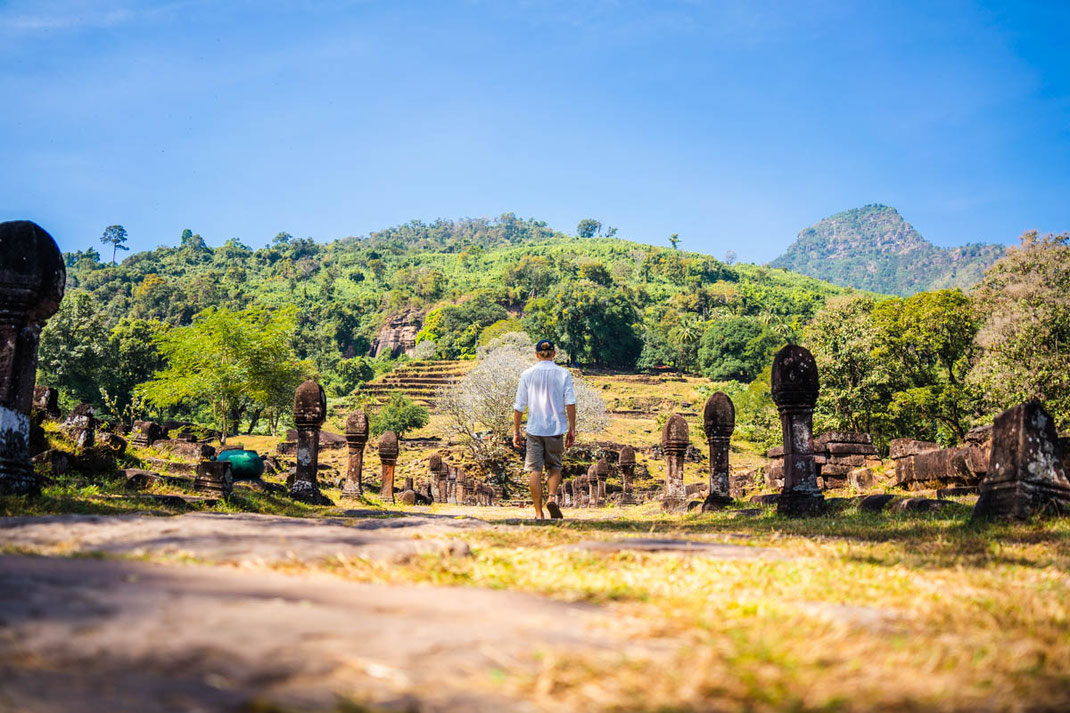


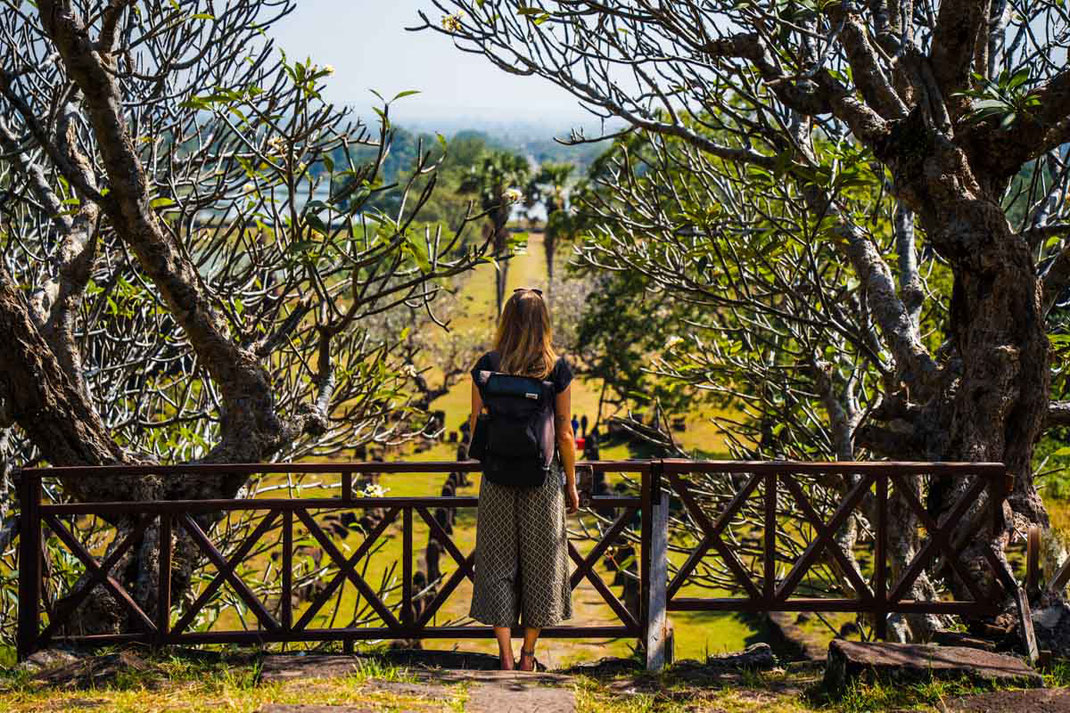

You could spend hours on the grounds, marveling at the individual temples and taking a short break under the temple trees. Vat Phou has a charm all its own and doesn't need to hide behind other significant structures. The trip to the south was worth it for this UNESCO World Heritage Site alone, but the region has even more to offer. The Bolaven Plateau with the highest waterfall in the country is our destination for the next few days!

